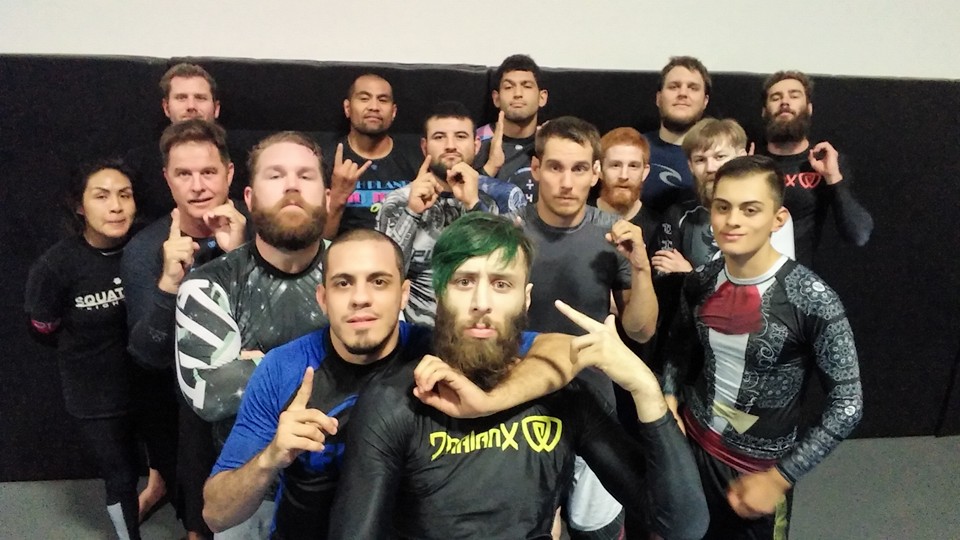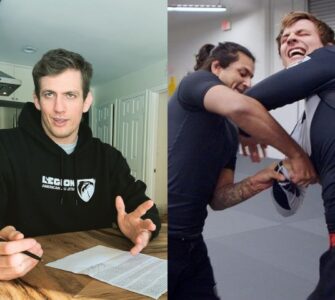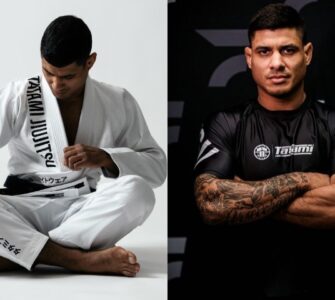In Jiu-Jitsu, you rarely see Gi practitioners who refuse to train No Gi, but the large majority of “NoGi only” practitioners literally hate the Gi and never train in it. Why is that?
Have you ever heard some No Gi only guys say “The Gi is unrealistic bro” ?
The Ultimate Fighting Championship introduced mainstream America to Brazilian Jiu-Jitsu. Spectators were able to witness the effectiveness of this martial art as Royce Gracie dominated his opponents who often times were much larger than him. Since then, many have turned to BJJ as their chosen martial art for self- defense.
Today Mixed Martial Arts fighting almost requires expertise in Brazilian Jiu-Jitsu in order to be successful in the cage. Moreover, those who do not have at least an elementary understanding of the basic concepts that revolve around BJJ tend to get taken down and submitted. A basic understanding of Jiu-Jitsu is necessary at the very least to properly defend. However, in the UFC today, the athletes do not wear a gi the way Royce Gracie did. This gives aspiring martial artists the impression that to learn Brazilian Jiu-Jitsu you do not need to train in the gi. To be quite honest, they are wrong. Training in the gi is absolutely necessary for the following reason:
Become more technical and defensively sound
Rolling in the gi offers both you and your opponent way more submissions. These submissions are “gi reliant” meaning that they don’t exist if you are not wearing the gi. Therefore, you must learn to be more defensively sound because you have more submissions to defend. In addition, wearing the bjj gi gives you and your opponent the ability to establish “grips” that would not exist without the gi. Your ability to prevent your opponent from moving and vis versa, forces you to have to become more methodical in order to effectively advance your position. The bottom line is that training in the gi helps you develop a higher level of technical ability and a stronger defense. To put the argument to rest, simply study the past no-gi champions or some of the elite UFC fighters in the world, and you will find that many of them train religiously in the gi.
Main differences
Dress
In Gi, you will of course wear a BJJ Gi. In No Gi, you wear shorts and a T-shirt or rash guard.
Grips
The Gi has a huge amounts of grips on both the jacket and pants. The most common jacket grip is the collar/sleeve grip. The grips allow you to have great control on the fight and to submit your opponent using their or your own Gi. It allows a much smaller opponent to control a bigger one. In No Gi you have more wrestling based grips such as neck, and grabbing all joints in the body. It is harder to control an opponent and can slip or power out of controls.
Strategy
No Gi i BJJ is faster paced. Gi slows things down due to the natural friction of the garment.
While and Gi and No Gi are very similar, the way both styles evolve are very different. In Gi, the numerous grips and Gi material mean that alot of set ups are based on using the Gi matrerial for ex: lapel or worm guard (which is impossible in No Gi). In No Gi, you look more at taking your opponent’s back because mounting in No Gi has limited submisions, and the back position has the rear naked choke and other options. You will find No Gi players using more guillotines and brabo/darce chokes as well as using more foot locks.
It is hard to say what is more technical as both styles are different and you also have much smaller No Gi players that submit bigger ones (taking the back is a great way of doing that).
Rules
Most No Gi tournaments have slightly different rules from Gi. IBJJF rules do not allow heel hooks for Gi and ADCC (biggest No Gi tournament) allows them.
Advantages of Gi
– Upper body strength
Non stop grabbing and pulling of fabric will strengthen your muscles and tendons.
– Technical, problem solving approach to fighting
Training with the Gi is like playing chess. The game is slowed down and is more methodical. The Gi and grips can sometimes control somebody’s strength. This forces a more technical approach. You will need to use more technique to escape submissions as there is less sweat.
-Improved Judo (Stand up Jiu-Jitsu).
Advantages of No Gi
-Improved wrestling
You will be using a lot more wrestling based takedowns.
– Improved conditioning & explosiveness
With the game being so much faster because of lack of Gi grips, your conditioning will go through the roof. Setting up many wrestling based takedowns will force you work your explosiveness in a different way than with the Gi.
-Better footlocks
In No Gi, footlocks are harder to counter because there is no Gi lapel to hold on to. Also, if you train with heel hooks then that opens a whole new set of weapons that you won’t have in the Gi.
What happens when you train both Gi and No Gi
In the long run, training both will make you a much better grappler. It is a mutual benefit. It will correct all your weaknesses. At Marcelo Garcia’s school they train 50% Gi and 50% No Gi.
For example your stand up, You will be using a mixture of Judo and Wrestling instead of relying on just one style. Very often you can beat a superior Judoka by using Wrestling and vice versa.
Also by mixing it up, you can make training less repetitive and more exciting.
You will also be competing in both Gi and No Gi.
Train both and become an ultimate grappler.
Who better to show you how to use his own brand of pressure passing and finesse to stop the Z Guard than half guard master Tom DeBlass?! And if you thought he was only a No Gi player, you’ve got another thing coming. In his new 4 volume “High Tech BJJ in the Gi” instructional that just hit the BJJ Fanatics charts, he’s going to give you all of his best Gi techniques from sweeps, to passes, to submissions and everything in between. And keep in mind, everything he shows in the Gi can easily translate to No Gi, so its like getting two instructionals for the price of one.


















